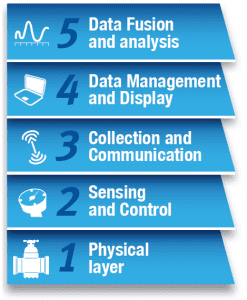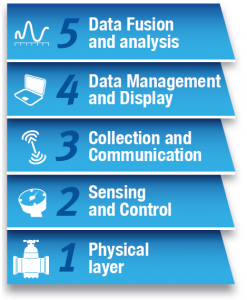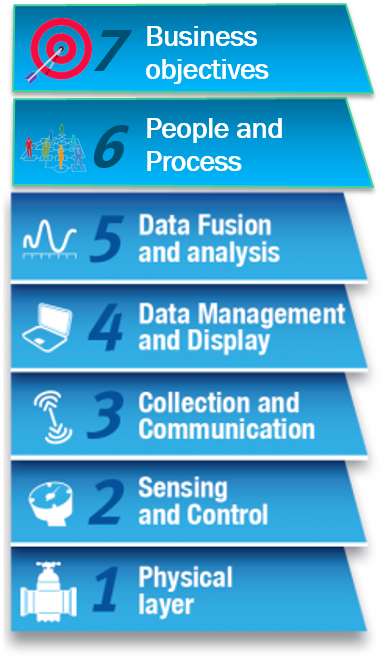
2 layers missing
Missing layers are starting to cause problems.

The SWAN layers are appealing. It’s a neat construct.
But there are 2 layers missing, and their absence is leading people in some cases to do the wrong things.
Because data fusion and analytics is at the top, it’s tempting to conclude that it’s the objective, the thing that everything else builds towards, the end in itself.
It makes people think the more data, the better. There is no reference to a business objective and the cost/benefit associated with that achieving.
It ignores people and business processes. It suggests that we don’t need to think about who does what, and what responsibility they each have. And this means that the outputs of data fusion and analysis are likely either not to get into use at all or to fall out of use.
The 2 missing layers are therefore:
- People and process
- Business objectives
 Our favourite example is requests for more frequent dialups by battery powered loggers. The cost of this is battery life, and battery exchange is often as expensive as the battery itself, even more so if your loggers don’t have batteries that can be changed in the field.
Our favourite example is requests for more frequent dialups by battery powered loggers. The cost of this is battery life, and battery exchange is often as expensive as the battery itself, even more so if your loggers don’t have batteries that can be changed in the field.
What no one can explain is why more frequent data delivery is needed, to what use it will cost-effectively be put, and what anyone will do with the output.
‘There is more to water distribution than pipes and valves…’ begins the SWAN article. One might add ‘There is more to water distribution than data fusion and analysis.’
It’s time to add the missing layers, update the construct and provide a complete picture and better guidance to the industry.